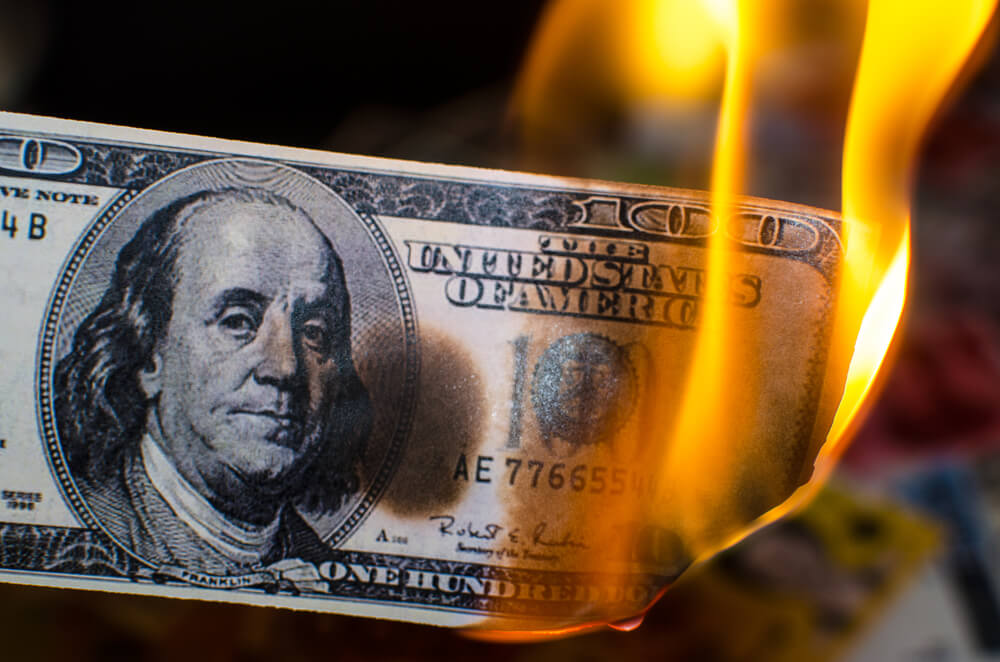The U.S. dollar has been strong for a while now. Too strong, in fact, according to economists and certainly the president, who is leveraging tariffs to try and get better trade deals with economies around the globe.
“China, their currency is dropping like a rock. Our currency is going up. I have to tell you, it puts us at a disadvantage,” Donald Trump said in a July interview with the Wall Street Journal.
With the trade war against China waging on, the Chinese yuan has fallen to a 7:1 ratio, which has softened the blow a bit from Trump’s seemingly endless tariff volleys.
While coming just short of labeling China a currency manipulator, the Chinese yuan has fallen 10 percent in the past six months while the dollar keeps rising.
But all of that is about to change, according to gold speculator and finance expert James Rickards.
Per a recent column on Daily Reckoning:
After biding their time, Trump and Mnuchin are ready to lower the boom on China with a cheap-dollar policy after the U.S. midterm elections. Of course, China will not be alone in feeling the impact of the new cheap dollar. Europe and the euro are also in the line of fire.
With this background in mind, what is the outlook for U.S. dollar exchange rates?
The single most important factor in the analysis is that two currencies cannot devalue against each other at the same time. It’s a mathematical impossibility. If one currency is going down against another, then the other must be going up. There’s no other way.
From January 2010 (when Obama launched the currency war) to August 2011 (when the dollar hit an all-time low), the currency wars benefited the U.S. at the expense of Europe, emerging markets and China. This was considered necessary by the participants at the G-20 leaders summit in Pittsburgh in September 2009.
The U.S. was and is the world’s largest economy. If the U.S. could not escape the impact of the 2008 financial panic, no one else would, either. In effect, the world would suffer stronger currencies while the U.S. devalued to jump-start the global recovery.
After August 2011, the dollar was allowed to revalue upward while the rest of the world, especially Europe and China, was allowed to devalue so they could claim some benefit from a weaker currency. This worked in the short run, but the problem was that the U.S. never returned to sustained growth at the prior trend of 3.25% growth per year.
The U.S. endured a long depression from 2007 until today with annual growth of about 2.3%. Europe and China got a boost, but the U.S. never pulled away from the pack.
Since then, it has been a matter of taking turns. The euro is allowed to depreciate to help growth and the banking system as the dollar gets stronger based on a slightly stronger U.S. economy. But no major economy has solved the problem of achieving self-sustaining trend growth.
While all of this has been going on, China has been free-riding, Rickards said.
There have been periods of a soft peg of the yuan to the dollar, but there are intermittent periods of a weaker yuan. China executed shock devaluations in August 2015 and December 2015.
Both times, U.S. stocks fell 11% in a matter of weeks. China has just executed a 10% slow-motion devaluation over the past six months. U.S. stocks have started to sink again.
Now Trump and Mnuchin are saying, “Enough!” The Europeans will have to take their turn with a stronger currency and China will be penalized for their currency manipulation. A weaker dollar is coming.
Whether this will be achieved with cooperation by the Fed or direct intervention by the Treasury remains to be seen, but a weaker dollar is the only way out of the U.S. growth conundrum and debt debacle.
